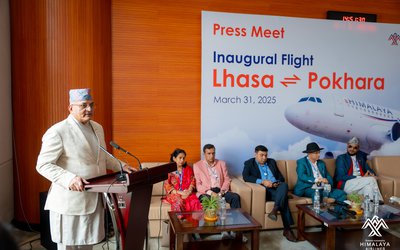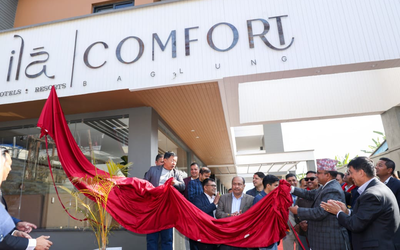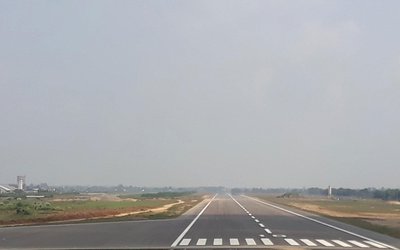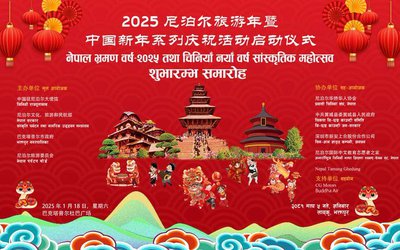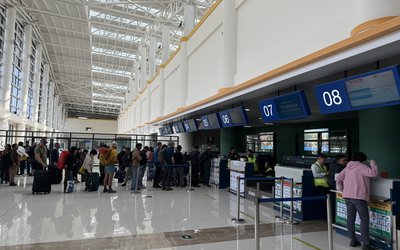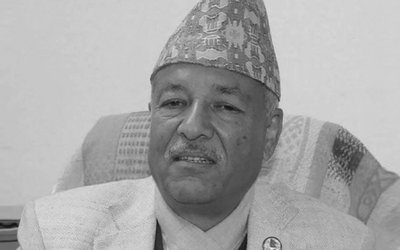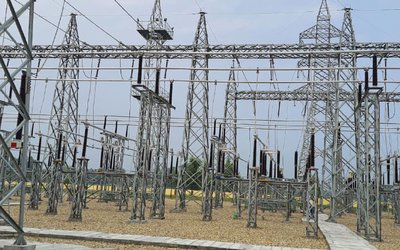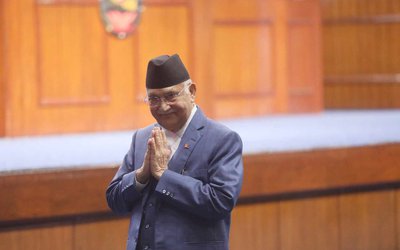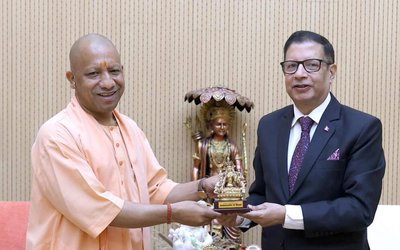
The world of tourism has gone truly global. Increasing air and land connectivity; booking of services through the Internet; and secure payment of services via credit cards for transport, accommodation, and souvenirs, for example, have not only given further boost to this vital sector of the economy, but has promoted understanding between the governments and citizens in the neighborhood, near and far.
This is an opportune moment for the tourism sector to bring policy makers and experts of the neighboring countries together. More importantly, the time allows each one of us to appreciate how tourism can enhance the interaction between the citizens of our neighborly countries, leading to even better understanding and appreciation of one another.
Recently, upon the initiative of the Embassy of India, a group from the tourism sector was taken to New Delhi. The members of the delegation were given the honour of holding a meeting, presided by Parvesh Dewan,Tourism Secretary of India, in July 2013. I was part of this delegation. Our No. 1 agenda was to enhance – and embrace two-way India-Nepal tourism.
Subsequently, I took the initiative from NICCI as “Tourism Convenor” to bring all stakeholders to the table over a few sessions. Within the first month of his appointment, we organised a handover of the draft MOU to Ranjit Rae, the Ambassador of India to Nepal, with the co-operation of NATTA, PATA, NATO, TAAN and HAN.
During the SAARC Summit held in Kathmandu, a Memorandum of Understanding was signed between the Ministry of Tourism India and the Ministry of Tourism of Nepal. We would like to acknowledge the role played by the Indian Embassy to achieve this. It was a notable achievement of Public-Private co-operation.
Some important results of our combined efforts were:
1. The announcement of Kathmandu – Benares; Lumbini – Bodhgaya; and Janakpur – Ayodhya as “Twin Cities;”
2. Daily bus service between Kathmandu and New Delhi, and vice versa.
3. The use of Indian rupees 1,000 and 500 denomination allowed in Nepal.
It has come to our knowledge that a decision has been made to appoint a joint working committee. It is our sincere and fervent hope that the appointees will be tourism professionals with commendable track record representing both the government and the private sectors.
We wish the recently appointed Director General of Tourism, Tulsi Prasad Gautam, a successful tenure. We look forward to working together to elevate our tourism industry to a level that brings value and recognition to our country. We are very pleased that after a long hiatus, NTB has appointed tourism experts from the private sector.
NTB has always been supportive of our initiatives we bring to the table. We look forward to co-operating with NTB and re-invigorate tourism in Nepal, the lifeline of our economy. We pledge our full support from the private sector to this new Team. We hope this will lead to a new era of co-operation between the public-private sectors.
The agenda is to promote Nepal as a multi-faceted tourism destination with a variety of attractions and services second to none. The goal is to make our country a safe and convenient destination with a package that can rival any destination anywhere in the world.
We are all aware the tourism industry in Nepal has taken some hard knocks in the last decade. Young democracies are vulnerable to political instability, and sacrifices are inevitable. But we just cannot sit and stare idly at years of our hard work and investment being blown away senselessly. Creative thinking and co-ordinated planning are imperative. The next generations’ futures are at stake.
However, we as investors in the tourism industry, require a safe and conducive environment for us to invest further to enhance our products and services.
This is where the Government of Nepal could engage more with us, the stakeholders, to create a friendly environment where we feel encouraged and safe to invest further to bring up our products and facilities to international standards.
It is my humble request to view us as partners – not just sharp business people – in the development of the industry and the country. For far too long, we have neglected to nurture and prioritise quality in order to use tourism as a medium to further ties and appreciate the differences – and similarities – between countries and their cultures. In order to get the full benefit from tourism – not always measured in dollars – we all need to pull up our socks and raise the bar even higher. Investment in education, training, human resources, marketing, adoption of best practices and collaboration between the public and private sectors are imperative. Corporate structures have to be re-defined and standardization of services has to be implemented and monitored rigorously.
(Rana is a Tourism Convener of Nepal India Chamber of Commerce & Industry. This is from a combined paper prepared by Hotel Association of Nepal; Nepal Association of Tour & Travel Agents; Pacific Asia Travel Association; Nepal Association of Tour Operators, and Trekking Agencies Association of Nepal. Excerpts of her statement delivered at the program of the signing of the MOU on the “Expansion of Bilateral Co-operation on Tourism: Nepal & India”)

